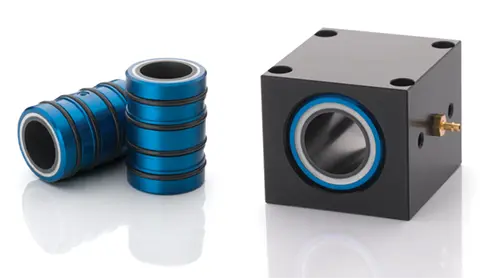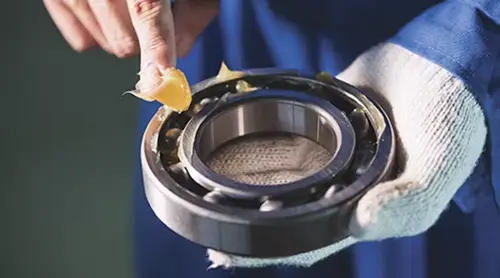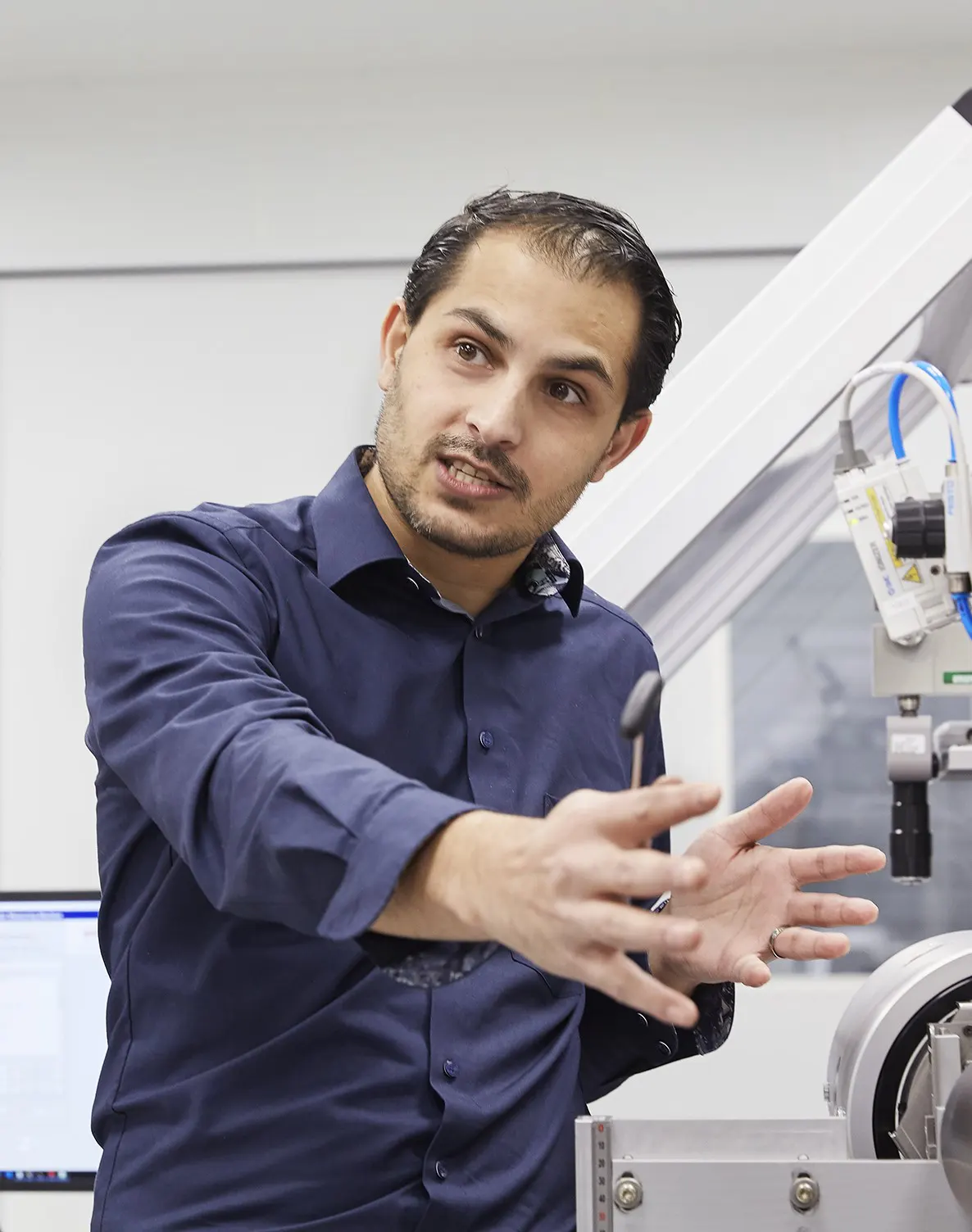- Engineering
- Measuring systems
- Machine qualification
-
Components
-
Systems
-
Learn more
-
- Expertise
-
About IBS
-
Our Story
-
Learn More
-

In high precision applications components need to perform with near-imperceptible margins of error. Bearings play a critical role, guiding and supporting the movement of parts with incredible accuracy. While traditional ball bearings have served as the workhorse for many applications, they hit a wall when it comes to achieving the absolute highest levels of precision. This is where air bearings step in, offering a technological leap forward for tasks demanding unmatched accuracy.
Instead of relying on rolling contact between metal surfaces, air bearings create a thin film of air that separates the moving parts. This eliminates friction and minimizes vibration, making them ideal for high-precision applications demanding exceptional accuracy and minimal movement imperfections.


Air bearings and ball bearings are different types of bearing systems used in various manufacturing processes. Each has its advantages and disadvantages, and the choice between them depends on specific application requirements. Below we describe issues in the manufacturing process where air bearings offer advantages over ball bearings.
Air bearings can provide extremely high levels of precision and accuracy because they eliminate physical contact between the bearing surfaces. This absence of friction, wear, and backlash allows for smooth, precise motion, making air bearings ideal for applications that require sub-micron level precision, such as semiconductor manufacturing and optical systems.

Unlike ball bearings, which rely on rolling contact and generate friction, air bearings work on a cushion of air, resulting in minimal friction and virtually no wear. This characteristic reduces the need for lubrication, maintenance, and replacement parts, making air bearings a good choice for applications where contamination from lubricants or wear debris is a concern.

Air bearings operate without any physical contact between the bearing surfaces, eliminating issues related to rolling resistance, wear, and lubrication that are inherent in ball bearings. Therefore, air bearings can offer smoother and more consistent motion, while maintaining their precision and performance over extended periods, reducing the need for constant adjustments or maintenance.

Air bearings can operate at very high speeds and in rapid acceleration/deceleration applications effectively, due to their low friction and inertia. In contrast, ball bearings may begin to slip at accelerations above 1G. This high dynamic response makes them suitable for applications that require quick and precise positioning, such such as laser cutting, semiconductor wafer handling, and scanning systems.

Low friction means less heat generation, so less thermal disturbance for precision applications, and minimal power loss for high speed applications, such as high speed precision spindles. While any heat generation is of course not zero, relative surface speeds of the order of 30m/s must be reached before significant heat can be measured.

Air bearings offer a smoother and quieter operation compared to ball bearings, due to the absence of physical contact between components. They can help reduce vibrations in precision machining applications, resulting in higher quality and more consistent products. This also makes them perfect for noise testing applications such as for automotive design.

In some high-precision applications, air bearings can support heavier loads than ball bearings of comparable size. This is due to the distributed air pressure supporting the load evenly across the entire bearing surface. The load-carrying capacity of an air bearing is largely determined by the air pressure, whereas ball bearings have load limitations based on their size and material.

Air bearings operate without physical contact. Due to the lack of this physical contact, air bearings typically require almost no maintenance compared to ball bearings, which may need periodic lubrication and replacement due to wear and tear. This results in longer service life and reduced maintenance requirements for air bearings.

Air bearings do not require lubrication because there is no physical contact between the bearing surfaces. This eliminates the need for lubrication systems, reduces maintenance costs, and prevents potential contamination issues that can arise from lubricants.

Air bearings can exhibit high stiffness and damping characteristics, providing excellent stability and vibration damping. This is particularly important in applications where minimizing vibrations and maintaining stability are critical, such as in metrology equipment.

Air bearings are preferred in cleanroom and vacuum environments, where contamination and outgassing are concerns. Ball bearings generate particles due to wear and may release lubricants or contaminants, making air bearings a cleaner and more reliable choice in high precision (semiconductor) settings. Air bearings help maintain the cleanliness and integrity of the manufacturing process.

Air bearings can be designed and manufactured with specific shapes and sizes to fit the unique requirements of a particular manufacturing process. This level of customization can be challenging with traditional ball bearings.

Hysteresis (lag between input and output) and backlash (play in the system) are common issues in mechanical systems that affect components with contact, like ball bearings. Air bearings, being non-contact, do not exhibit these problems. They offer immediate and repeatable responses to input commands, which is essential for ultra-precise positioning and control.
Air bearings do require a continuous supply of compressed air, which may introduce complexity and extra costs into the system. But at the same time, air bearings have a longer operational lifespan than ball bearings, reducing the overall operating costs. Air bearings provide sub-micron-level precision due to their frictionless operation. This level of precision is crucial in applications such as semiconductor manufacturing, optics, and precision machining, where minute errors can significantly impact the quality of the final product.
